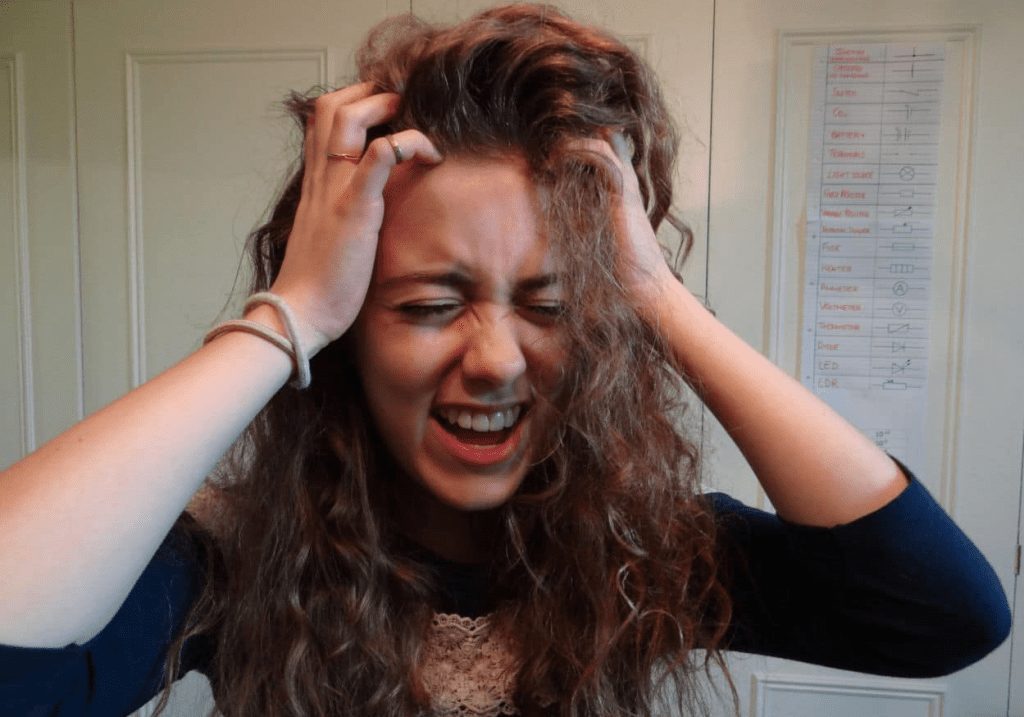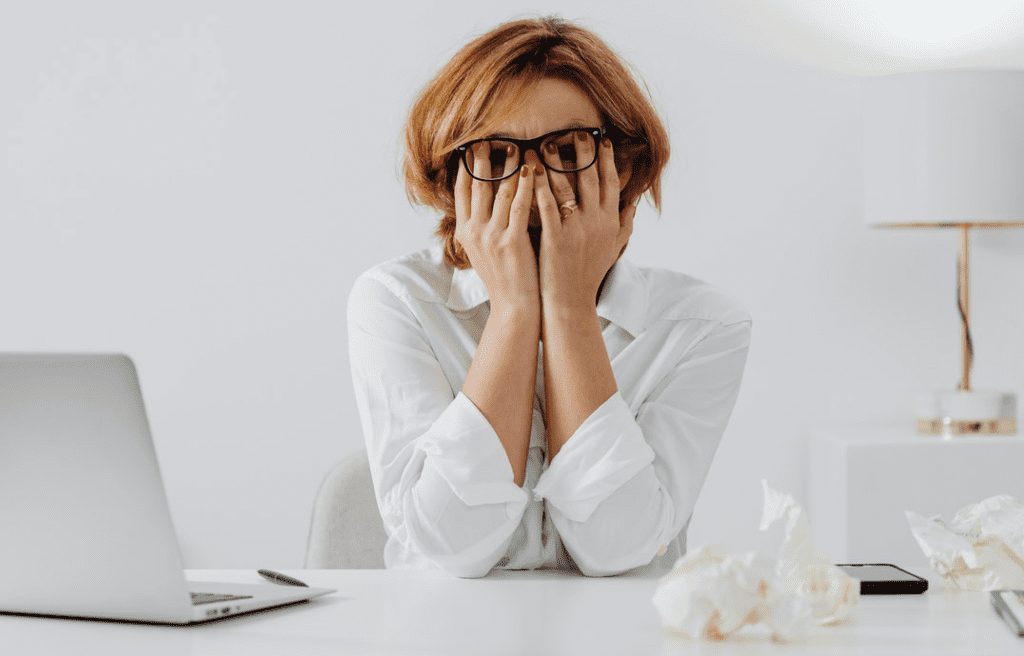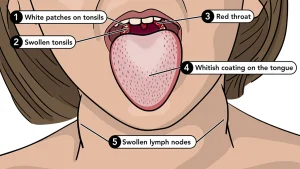
Understanding Different Types of Anxiety Disorder
What is general or generalized anxiety disorder?
Generalized Anxiety Disorder (GAD) is a prevalent mental health condition that affects millions of people worldwide. It is characterized by excessive and uncontrollable worry or anxiety about everyday situations, even when there is little or no apparent reason for concern. This chronic state of apprehension can have a significant impact on a person’s daily life, making it challenging to focus on tasks, relax, or engage in social activities. GAD differs from other anxiety disorders in its all-encompassing nature, as it is not limited to specific triggers or situations.
One of the key aspects to understand about Generalized Anxiety Disorder is its relationship with other types of anxiety disorders. Anxiety disorders encompass a range of conditions, each with its own unique features. These include Panic Disorder, characterized by sudden, intense episodes of fear; Social Anxiety Disorder, marked by an overwhelming fear of social situations; Specific Phobias, which involve intense and irrational fears of particular objects or situations; Separation Anxiety Disorder, more commonly seen in children and involving excessive anxiety about being separated from caregivers; and Selective Mutism, a condition where individuals are unable to speak in certain social situations despite being capable of normal speech in others.
Individuals with GAD may experience a variety of symptoms, both physical and emotional. Physical symptoms can include restlessness, muscle tension, headaches, and gastrointestinal issues. Cognitive symptoms may manifest as difficulty concentrating, irritability, and a constant feeling of being on edge. Emotionally, GAD can lead to mood swings, a sense of dread, and an overarching feeling of unease.
It is crucial to recognize the signs of Generalized Anxiety Disorder, as early intervention and treatment can greatly improve the quality of life for individuals affected by this condition. Seeking professional help from a mental health expert is a crucial step towards managing and overcoming GAD. Remember, you are not alone, and there are resources available to support you in your journey towards better mental health.
Overcoming Social Anxiety: Tips and Techniques
Is social anxiety part of anxiety disorder?
Social anxiety is indeed a significant component of anxiety disorders. It is a specific subtype of anxiety disorder that revolves around an overwhelming fear of social situations and interactions. Unlike the occasional nervousness that many people experience before social events, social anxiety is chronic and can be debilitating, interfering with a person’s ability to function in everyday life.

Individuals with social anxiety often experience intense anxiety and distress in situations where they feel they may be evaluated or judged by others. This can include scenarios such as public speaking, meeting new people, or even participating in everyday activities like going to a party or dining in a restaurant. The fear of being scrutinized or humiliated can be so severe that it leads to avoidance of social situations altogether.
It’s important to note that while social anxiety is a specific type of anxiety disorder, it is just one among several different types. Anxiety disorders encompass a range of conditions, each with its own distinct characteristics and triggers. These may include Generalized Anxiety Disorder, which involves excessive and uncontrollable worry about various aspects of life; Panic Disorder, marked by sudden and intense episodes of fear; Specific Phobias, characterized by intense and irrational fears of particular objects or situations; Separation Anxiety Disorder, more commonly seen in children, involving excessive anxiety about being separated from caregivers; and Selective Mutism, where individuals are unable to speak in certain social situations despite being capable of normal speech in others.
Recognizing social anxiety as a part of the broader spectrum of anxiety disorders is crucial for accurate diagnosis and effective treatment. With appropriate support and strategies, individuals struggling with social anxiety can learn to manage their symptoms and lead fulfilling, socially engaged lives. Remember, seeking professional help from a mental health expert is a vital step towards understanding and addressing social anxiety.
Coping with Panic Disorder: Strategies for Relief
What are some coping strategies for panic disorder?
Yes, Panic Disorder is indeed a distinct and significant part of the broader category of anxiety disorders. It is characterized by recurrent and unexpected episodes of intense fear or panic, often accompanied by physical symptoms like a rapid heartbeat, shortness of breath, and a feeling of impending doom. These panic attacks can be incredibly distressing and may lead individuals to avoid certain situations or places for fear of experiencing another episode.

Panic Disorder sets itself apart from other anxiety disorders in its hallmark feature: the sudden onset of intense, overwhelming fear. Unlike Generalized Anxiety Disorder, which involves pervasive and chronic worry about various aspects of life, panic attacks in Panic Disorder can occur seemingly out of the blue, even in situations where there is no immediate threat or danger.
It’s important to recognize that while Panic Disorder is a specific type of anxiety disorder, there are other subtypes within the broader category of anxiety disorders. These include Generalized Anxiety Disorder, which involves excessive and uncontrollable worry about various aspects of life; Social Anxiety Disorder, characterized by an overwhelming fear of social situations and the fear of being judged by others; Specific Phobias, which involve intense and irrational fears of particular objects or situations; Separation Anxiety Disorder, more commonly seen in children, involving excessive anxiety about being separated from caregivers; and Selective Mutism, where individuals are unable to speak in certain social situations despite being capable of normal speech in others.
Understanding Panic Disorder within the context of anxiety disorders is crucial for accurate diagnosis and effective treatment. With appropriate support and strategies, individuals struggling with Panic Disorder can learn to manage their symptoms and regain control over their lives. If you or someone you know is experiencing symptoms of Panic Disorder, seeking professional help from a mental health expert is a vital step towards understanding and addressing this condition.
Understanding Physical Symptoms of Anxiety
What are the physical behaviors of anxiety?
Yes, physical symptoms are a significant component of anxiety-disorders. When individuals experience anxiety, it’s not solely a mental or emotional experience; it also has tangible effects on the body. These physical symptoms can range from mild to severe and can vary from person to person.
One of the hallmark features of anxiety-disorders is the body’s fight-or-flight response. This is a natural, evolutionary response to perceived threats. When triggered, it releases hormones like adrenaline, which prepare the body to respond to danger. In individuals with anxiety-disorders, this response can be triggered in situations where there is no immediate threat, leading to a range of physical symptoms.

Common physical symptoms of anxiety-disorders include increased heart rate, rapid breathing, muscle tension, and trembling. These responses are designed to prepare the body to either face the threat or flee from it. However, in the context of anxiety-disorders, these physical reactions can be disproportionate to the actual situation.
It’s important to note that while physical symptoms are a prominent aspect of anxiety-disorders, they are just one facet of a complex condition. Anxiety-disorders encompass a wide range of experiences, each with its own distinct characteristics and triggers.
These may include Generalized Anxiety-Disorder, which involves excessive and uncontrollable worry about various aspects of life; Panic Disorder, characterized by sudden and intense episodes of fear; Social Anxiety-Disorder, marked by an overwhelming fear of social situations; Specific Phobias, involving intense and irrational fears of particular objects or situations; Separation Anxiety-Disorder, more commonly seen in children, involving excessive anxiety about being separated from caregivers; and Selective Mutism, where individuals are unable to speak in certain social situations despite being capable of normal speech in others.
Recognizing physical symptoms as a key component of anxiety-disorders is crucial for understanding and addressing the condition. Seeking professional help from a mental health expert can provide valuable insights and strategies for managing both the physical and emotional aspects of anxiety-disorders. Remember, you are not alone, and there are resources available to support you in your journey towards better mental health.
Related Articles
How do you deal with emotional anxiety?
Absolutely, emotional symptoms are a significant aspect of anxiety-disorders. These symptoms often manifest as intense and persistent feelings that can greatly impact a person’s overall well-being and quality of life. It’s essential to recognize and understand these emotional symptoms to effectively address and manage anxiety-disorders.
Individuals with anxiety-disorders commonly experience a range of emotional symptoms. This may include feelings of apprehension, restlessness, and a pervasive sense of unease. They may also struggle with irritability and find it difficult to concentrate due to the constant state of worry. Additionally, anxiety-disorders can lead to mood swings and an overall feeling of dread. These emotional responses are a result of the body’s natural reaction to perceived threats, and in the case of anxiety-disorders, this response can become heightened and disproportionate to the actual situation.
While emotional symptoms are a crucial aspect of anxiety-disorders, it’s important to note that they are just one facet of a complex condition. Anxiety-disorders encompass a wide range of experiences, each with its own distinct characteristics and triggers.
These may include Generalized Anxiety-Disorder, which involves excessive and uncontrollable worry about various aspects of life; Panic Disorder, characterized by sudden and intense episodes of fear; Social Anxiety-Disorder, marked by an overwhelming fear of social situations; Specific Phobias, involving intense and irrational fears of particular objects or situations; Separation Anxiety-Disorder, more commonly seen in children, involving excessive anxiety about being separated from caregivers; and Selective Mutism, where individuals are unable to speak in certain social situations despite being capable of normal speech in others.
Recognizing emotional symptoms as a key component of anxiety-disorders is vital for understanding and addressing the condition. Seeking professional help from a mental health expert can provide valuable insights and strategies for managing both the emotional and physical aspects of anxiety-disorders. Remember, support is available, and seeking help is a significant step towards better mental health and well-being.
Exploring therapy options for anxiety treatment
What type of therapy is best for anxiety?
Yes, therapy options are a crucial component of managing and treating anxiety-disorders. They play a pivotal role in helping individuals navigate the complex terrain of anxiety and develop effective coping mechanisms. Therapy provides a safe and supportive environment for individuals to explore their thoughts, emotions, and behaviors related to anxiety.
One of the most common forms of therapy for anxiety-disorders is cognitive-behavioral therapy (CBT). CBT focuses on identifying and changing negative thought patterns and behaviors that contribute to anxiety. Through CBT, individuals learn to challenge irrational thoughts and develop healthier ways of thinking and reacting to stressors. This form of therapy empowers individuals to take control of their anxiety and develop practical strategies for managing it.
Another effective therapy option for anxiety-disorders is exposure therapy. This approach involves gradually exposing individuals to the situations or objects that trigger their anxiety in a controlled and supportive environment. Over time, repeated exposure allows individuals to desensitize themselves to these triggers, reducing the intensity of their anxiety response.
Additionally, mindfulness-based therapies, such as mindfulness-based stress reduction (MBSR) and dialectical behaviour therapy (DBT), have shown promise in helping individuals manage anxiety. These therapies emphasize present-moment awareness, acceptance of difficult emotions, and the development of healthy coping skills.
It’s important to note that therapy options are just one component of a comprehensive approach to managing anxiety-disorders. Depending on the severity of the condition, a combination of therapy and, in some cases, medication may be recommended. The choice of therapy will depend on the individual’s specific needs and preferences. Consulting with a mental health professional can provide valuable insights and recommendations for the most effective therapy options for each unique situation. Remember, seeking help is a proactive step towards better mental health and overall well-being.
What is the most recommended medication for anxiety?
Yes, medication is indeed a significant part of the treatment approach for anxiety-disorders. It can be a valuable tool in helping individuals manage the symptoms of anxiety and improve their overall quality of life. Medications for anxiety-disorders work by regulating the neurotransmitters in the brain, which play a crucial role in mood regulation.
One of the most commonly prescribed types of medications for anxiety-disorders are selective serotonin reuptake inhibitors (SSRIs). These medications work by increasing the levels of serotonin, a neurotransmitter associated with feelings of well-being and happiness. SSRIs have been shown to be effective in reducing the symptoms of various anxiety-disorders, including Generalized Anxiety-Disorder, Panic Disorder, and Social Anxiety-Disorder.
Another class of medications used to treat anxiety-disorders are benzodiazepines. These medications work by enhancing the effects of a neurotransmitter called gamma-aminobutyric acid (GABA), which helps calm the central nervous system. Benzodiazepines are typically prescribed for short-term relief of severe anxiety symptoms, as they can be habit-forming if used for extended periods.
In addition to SSRIs and benzodiazepines, other medications such as serotonin-norepinephrine reuptake inhibitors (SNRIs) and tricyclic antidepressants (TCAs) may also be prescribed to individuals with anxiety-disorders. These medications work by targeting different neurotransmitters and can be effective in specific cases.
It’s important to note that the decision to use medication as part of the treatment plan for anxiety-disorders should be made in consultation with a healthcare professional. They will carefully assess the individual’s specific symptoms, medical history, and any potential contraindications before recommending a course of medication. In some cases, a combination of therapy and medication may be the most effective approach. Regular follow-up appointments with a healthcare provider are essential to monitor progress and adjust the treatment plan as needed. Remember, seeking professional help is a proactive step towards better mental health and overall well-being.
Implementing Lifestyle Changes for Anxiety Relief
What are the best lifestyle changes to reduce anxiety?
Absolutely, lifestyle changes are an integral component of managing and alleviating symptoms of anxiety-disorders. While therapy and medication play crucial roles, making adjustments to one’s lifestyle can have a profound impact on overall well-being and the severity of anxiety symptoms.
One of the most fundamental lifestyle changes for individuals with anxiety-disorders is prioritizing regular exercise. Physical activity has been shown to release endorphins, the body’s natural mood elevators. Engaging in activities like jogging, yoga, or even brisk walking not only promotes physical health but also contributes significantly to mental and emotional well-being. It helps reduce tension, increase relaxation, and improve sleep quality – all of which are vital for managing anxiety.
Dietary habits are another essential aspect to consider. Consuming a balanced diet that includes whole foods, fruits, vegetables, lean proteins, and healthy fats provides the body with the necessary nutrients to function optimally. Avoiding excessive caffeine and alcohol intake is also crucial, as these substances can exacerbate feelings of anxiety. Staying hydrated is equally important, as even mild dehydration can affect mood and cognitive function.
Prioritizing regular and sufficient sleep is imperative for individuals with anxiety disorders. Quality rest allows the body to recharge, repair, and restore balance to the nervous system. Establishing a consistent sleep routine and creating a calming bedtime environment can significantly improve sleep patterns.
Furthermore, practicing stress management techniques such as mindfulness, deep breathing exercises, and meditation can be invaluable in reducing anxiety levels. These techniques promote relaxation and help individuals gain better control over their thoughts and emotions. Engaging in hobbies, creative pursuits, or activities that bring joy and fulfillment can also serve as powerful stress relievers.
Ultimately, lifestyle changes should be tailored to the individual’s unique needs and preferences. Consulting with a healthcare professional or mental health expert can provide personalized guidance on making effective lifestyle adjustments to complement other forms of treatment for anxiety disorders. By incorporating positive lifestyle changes, individuals can take proactive steps towards better mental health and well-being. Remember, small shifts in daily routines can lead to significant improvements in managing anxiety.
Conclusion:
In conclusion, it’s imperative to recognize the multifaceted nature of this mental health condition and the various approaches available for its management. This complex interplay of emotional, physical, and cognitive factors highlights the importance of a comprehensive treatment plan. By understanding the distinct nuances of different anxiety-related conditions, individuals and healthcare professionals alike can make informed decisions about the most effective interventions.
Therapy options, including cognitive-behavioral therapy (CBT) and exposure therapy, provide invaluable tools for individuals to navigate their fears and worries. These evidence-based approaches empower individuals to challenge negative thought patterns, gradually confront their fears, and develop healthier coping mechanisms. Alongside therapy, medication can be a vital component, particularly in cases where symptoms are severe or significantly impacting daily functioning. Medications, such as SSRIs and benzodiazepines, work to regulate neurotransmitters, helping to rebalance the brain’s chemistry.
Additionally, lifestyle changes play a pivotal role in managing anxiety-related conditions. Regular exercise, a balanced diet, and adequate sleep are fundamental elements of a holistic approach. These adjustments not only promote physical health but also contribute to mental and emotional well-being. Incorporating stress management techniques, such as mindfulness and deep breathing exercises, further equips individuals with valuable tools to combat anxious thoughts and sensations.
It’s crucial to remember that seeking professional help is not a sign of weakness, but a proactive step towards improved mental health. The journey towards managing anxiety-related conditions is unique to each individual, and it’s essential to find the combination of strategies that work best. By acknowledging the various facets of anxiety and utilizing a combination of therapies, medication, and lifestyle changes, individuals can regain control over their lives and experience a renewed sense of well-being. Remember, there is support available, and with the right resources and strategies, individuals can lead fulfilling, anxiety-free lives.
Explore our more links
FAQs:
Q: What Are the Common Signs of Excessive Worry and Fear?
Answer: This question explores the recognizable symptoms that individuals may experience when dealing with heightened levels of worry and fear.
Q: Can Anxiety Impact Physical Health?
Answer: This delves into the physical effects that anxiety can have on the body, emphasizing the importance of holistic well-being.
Q: What Role Does Genetics Play in Anxiety?
Answer: This question addresses the potential genetic predispositions that can contribute to the development of anxiety-related conditions.
Q: How Can Lifestyle Changes Help Manage Symptoms?
Answer: Here, the focus is on the lifestyle adjustments that individuals can make to alleviate the impact of anxiety in their daily lives.
Q: Is Therapy Effective in Treating Anxiety?
Answer: This explores the various therapeutic approaches and their efficacy in helping individuals cope with and overcome anxiety.
Q: What Types of Medications Are Used to Manage Anxiety?
Answer: This question delves into the different classes of medications that are commonly prescribed to individuals struggling with anxiety-related conditions.
Q: Can Children and Adolescents Experience Anxiety?
Answer: This addresses the prevalence of anxiety in younger populations and highlights the importance of early intervention.
Q: How Does Anxiety Interact with Other Mental Health Conditions?
Answer: This question delves into the potential co-occurrence of anxiety with other mental health disorders and the complexities of dual diagnosis.
Q: What Are the Long-Term Effects of Untreated Anxiety?
Answer: This explores the potential consequences of leaving anxiety unaddressed over an extended period, underlining the significance of seeking help.
Q: Are There Self-Help Techniques for Managing Anxiety?
Answer: This question focuses on empowering individuals with practical, accessible strategies they can employ to alleviate anxiety in their daily lives.
























10 thoughts on “3 Bold Stages to Triumph Over Anxiety Disorder: 2023’s Breakthroughs”
semaglutide buy from canada
ozempic tab 7mg
wegovy semaglutide
ozempic
wegovy pill form
rybelsus xr
ozempic for weight loss without diabetes
ozempic tablets buy
rybelsus 3mg
buy wegovy from canada